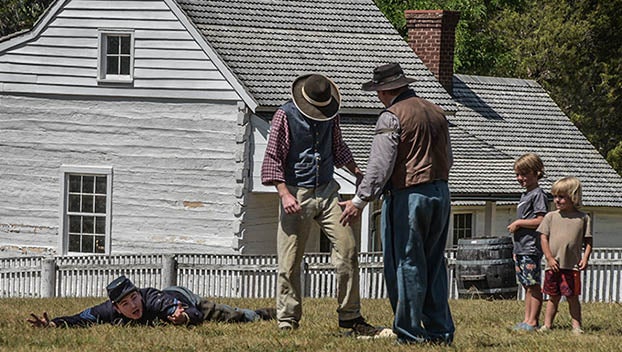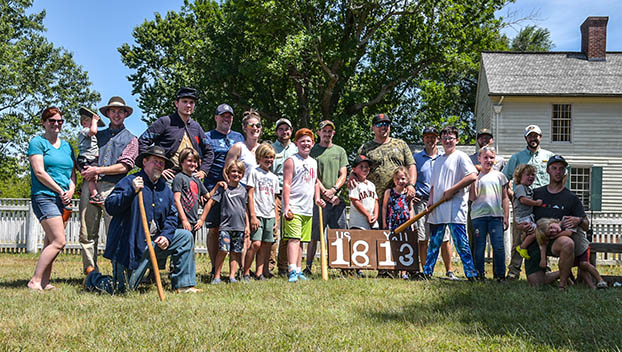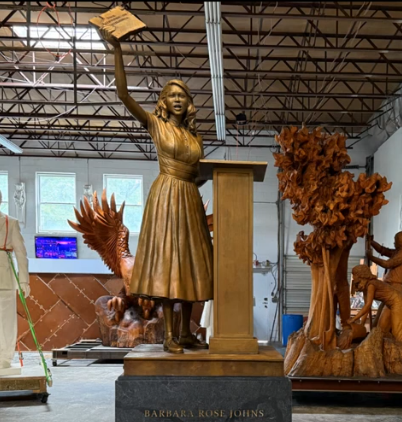Local teams compete in Civil War sport at Appomattox Court House
Published 6:02 pm Friday, July 19, 2024
|
Getting your Trinity Audio player ready...
|
The scores were a little bit higher than what we’re used to. The uniforms were definitely different. Baseball was a different sport in the 1860s, when ‘the Civil War sport’ was first created. For one thing, your “prize” for winning was to walk away with the ball itself. The challenging team was responsible for bringing the ball and the winning team walked away with it. The bases were bags full of sawdust and the pitcher’s mound was an iron plate. And after celebrating the 4th, families from Buckingham, Cumberland and Prince Edward counties got to experience this firsthand, playing baseball under the old rules, at Appomattox Court House.
On Saturday, July 6, the state park held a series of pickup games, all of which were played under Civil War era rules. That means if you hit a ball and it was caught on one bounce, you were out. It also means “soaking” was allowed, where if you hit the runner with the ball while he’s running between bases, he was out. In today’s game, we let players run past first as they try to get a hit. Nope, that wasn’t allowed either, leading to players sliding or diving to first base just like we see at home plate now.
The umpires also weren’t really there to call balls and strikes. According to the rules of the National Association of Base Ball Players from 1863, the pitcher wasn’t trying to get the batter out. The pitcher was supposed to throw it so the batter could hit it. The umpire only got involved if it got out of control, like say if the pitcher just couldn’t hit the catcher’s mitt at all. At that point, the umpire could call for a walk, or he could ignore it. It was completely his decision. Also, don’t expect all overhand throws. Most pitchers tossed underhanded in those early days.
In many ways, it’s a much simpler version of the game that was on display at Appomattox. And anyone could and did show up to take part.

No mitts needed in Civil War sport
And while some teams of friends and families will be competing, residents could just show up and join on their own as well. You didn’t need to bring anything, not even a mitt. Why? Because you catch with your hands.
“The ball is much softer than it is today,” said Brian Miller. He works as the lead park ranger at Appomattox Court House. “There was no need to bring a mitt, as they were not used.”
That was part of the challenge back in the 1860s. According to those National Association rules, the ball had to be made of a mixture of india rubber and yarn, covered with leather. Today’s version is much harder, consisting of a cork core, wrapped in two layers of rubber. On the one hand, the earlier version was much easier to catch. But it also was harder to hit. While today’s game is focused on high scores and home runs, it wasn’t as easy to take a wooden bat and drive a piece of yarn wrapped in rubber over a fence. Bats were unique as well. They all had to be made of wood, but that was it, as far as rules were concerned.
“It must be made of wood and may be of any length to suit the striker,” the National Association rules state.
Artist drawings from the era show all kinds of examples. You had some who preferred a tiny bat, something that barely crossed the plate. Others preferred a long barrel, practically guaranteeing if it crossed the plate, they could hit it.







